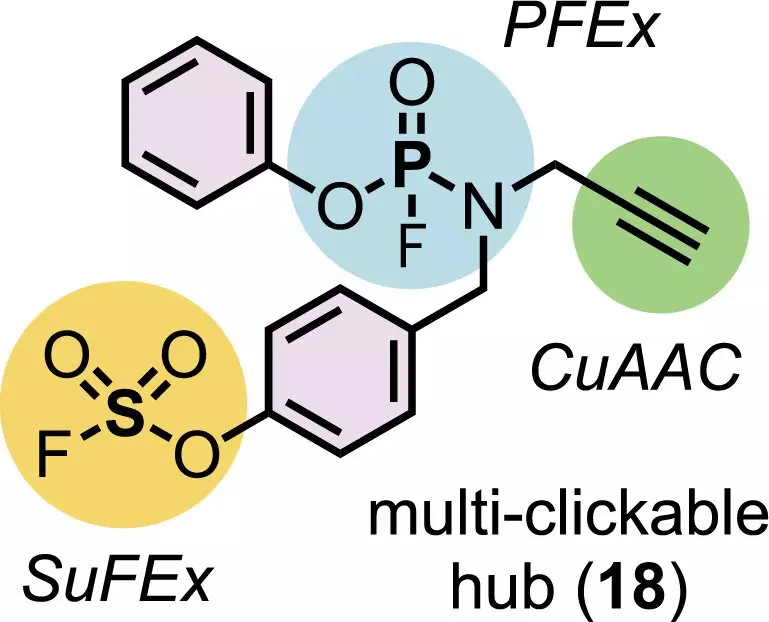Chemists at the Cold Spring Harbor Laboratory (CSHL) in collaboration with K. Barry Sharpless, a two-time Nobel laureate, have developed a new chemical transformation they call phosphorus fluoride exchange (PFEx). The new technique snaps together chemical building blocks to form new molecules, leading to a vast array of complex molecules that can be explored. This process is known as click chemistry, and it is a reliable process that offers chemists a powerful set of tools. PFEx uses phosphorous as a chemical connector, similar to its use in biology. In cells, phosphorous gives structure to DNA and holds together essential energy-storing molecules. It is a versatile connector that can readily connect multiple chemical groups to create three-dimensional shapes. By using PFEx, chemists can click together multiple different chemical components around a single phosphorous hub and build even more complex molecules by incorporating more phosphorous connectors.
Exploring PFEx as a Source of Cancer Therapeutics
The new kind of click chemistry, PFEx, is being explored as a source of cancer therapeutics. The researchers hope to find effective new cancer therapeutics among the vast array of complex molecules generated by PFEx. The benefit of this approach is that researchers can optimize the reactivity of the molecules involved in PFEx reactions. This could ensure that potential drugs interact only with their desired targets, reducing the risk of side effects. PFEx reactions might even enable drugs to latch onto their targets inside the body, leading to more effective treatment.
The researchers at CSHL expect that PFEx will also help create materials with useful properties. For example, PFEx might be used to incorporate flame retardants or antimicrobials into new surfaces. PFEx materials will have an important advantage over the “forever chemicals” found in many of today’s products. Phosphorous bonds are not excessively stable, so they can be easily broken down when a product is ready for recycling.
The new chemical transformation PFEx is a gateway to discovery. It offers chemists a powerful set of tools to explore a vast array of complex molecules. PFEx has the potential to generate effective new cancer therapeutics and create materials with useful properties. With the optimization of reactivity, the risk of side effects can be reduced, leading to more effective treatment. PFEx materials will also have an environmental advantage over the “forever chemicals” present in many products today.



Leave a Reply